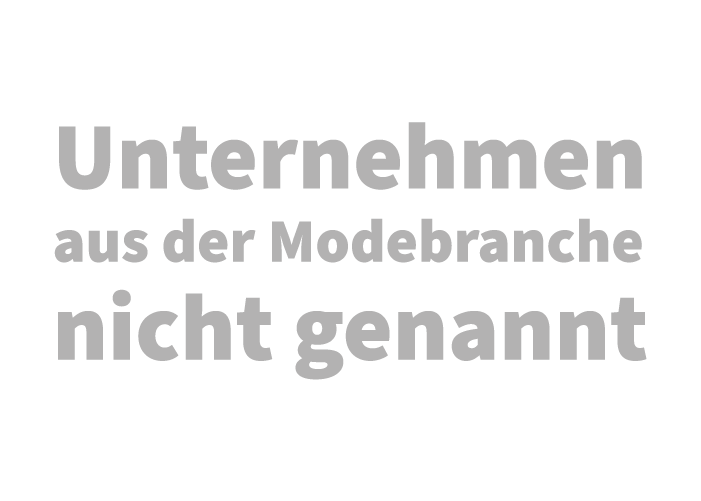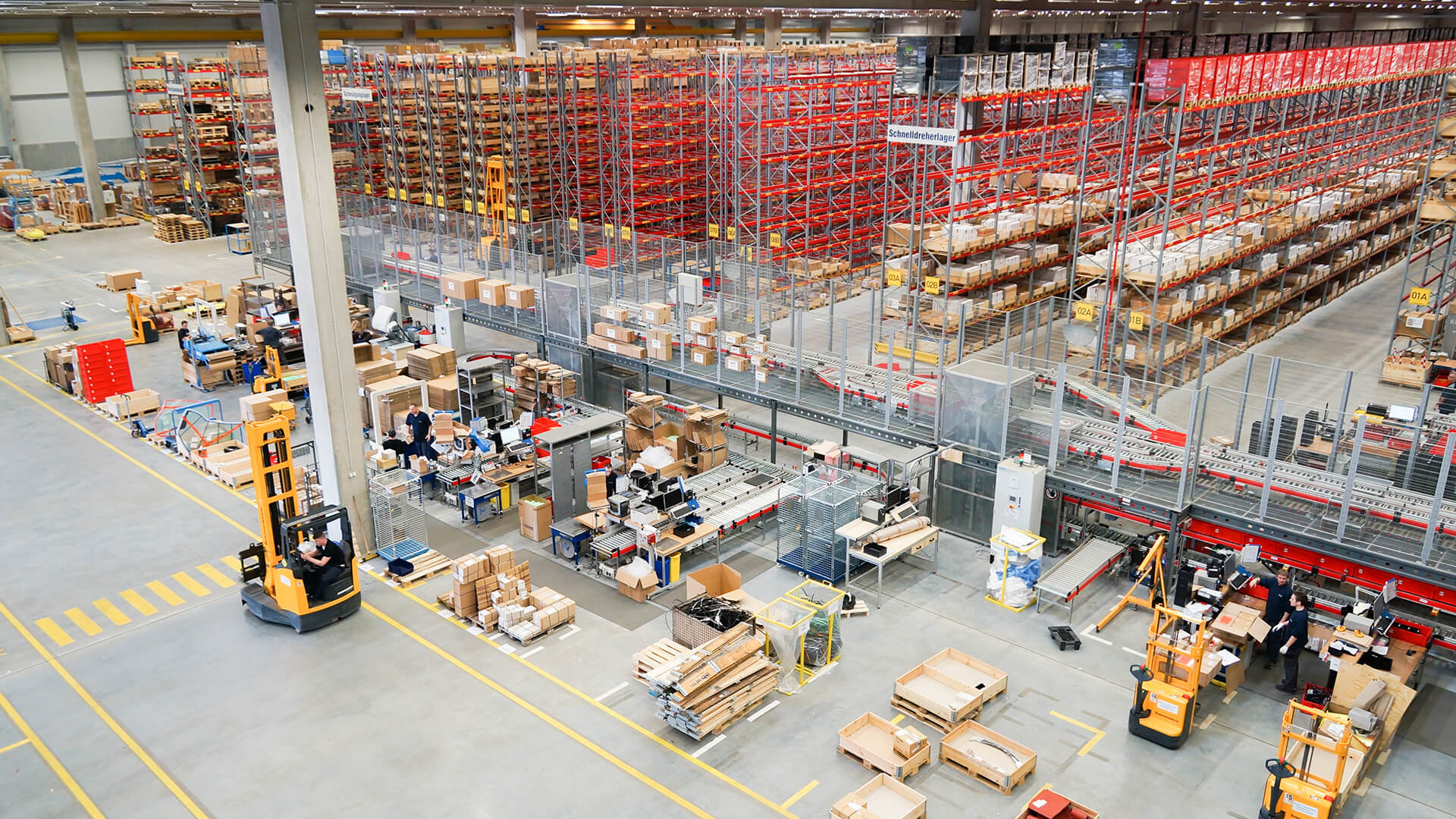Efficiency during the start-up process
Huge and multi-faceted: The dimensions of the new distribution centre can barely be controlled with conventional solutions. This is where around 100,000 different items are stocked in one fully automatic and two manual storage areas. During peak times, there are more than four million parts in up to 500,000 boxes or handling units – known as “HUs” for short – in this distribution centre. Most of them can be found in a shuttle warehouse with a capacity of 450,000 holding areas. There is also a forkliftmanaged high-bay warehouse and a paternoster warehouse for ties and similar small items and accessories.
A new build requires a new way of thinking
All the items fall under the so-called packaged goods range. The storage and picking capacities were at their limits due to continuous growth. Over a construction period of just 15 months, a complex measuring 279 metres long and 122 metres wide was created on a surface area of 35,000 square metres. The sheer size of the new build required a new way of thinking in many respects – even when it came to the inventory.
“Performing a full count of all the items was no longer an option for us,”
reported one of the company’s logistics specialists. Only the shuttle warehouse justified a new inventory method. “It’s like a black box that we can’t just go into and count,” added the logistics specialist. Another argument in favour of abandoning the full count method was the immense time and cost expenditures associated with it. “At the previous two warehouse locations, up to 25 employees worked on the full count inventory for two full days,” recalled the logistics expert.
The company opted for the sample inventory as an alternative to the full count during the construction phase. This requires computerassisted warehouse management and a certified inventory system.
Service creates trust
While looking for a suitable supplier, the fashion group soon came across Stat Control, the Hamburg-based software and consulting company.
“We were particularly convinced by REMIRA’s high level of expertise and the fact that it is the only supplier to exclusively focus on the topic of random sample methods for inventories and inventory controls,”
said one senior employee, who was significantly involved in the selection process. They also added that “the chemistry was perfect right from the start”. In the first step, the company opted for the Extrapolation processes of STATCONTROL. The implementation of both the software and the interface to SAP EWM, the ERP system, went without a hitch.
“We were impressed by REMIRA’s on-site service during the project. The responsible employees were on hand to help until everything was up and running,”
pointed out one of the decision-makers.
The software works according to all four approved extrapolation methods, with regression estimation in particular providing the most accurate results. This type of inventory is always recommended when, in addition to an automated warehouse, there are also conventional storage areas with different inventory security. The proportion of items to be counted here is approximately between five and ten percent of the warehouse items.
Further savings potential
The first random sample inventory already gave the logistics experts an impeccable report. In the end, the auditor certified a relative sampling error of only 0.13 percent and a deviation from the total value of only 0.03 percent. Permissible would be 1% sampling error and 2% deviation from the total value. For the inventory, the software had calculated a sample of 750 boxes or about 10,000 parts, which could be carefully counted by 20 employees in a single day. Compared to the 2.5 million parts that had to be taken in hand in the past, this was a huge step forward. However, the advantage does not only concern the time saved and the associated costs. After all, full inventories with several million parts inevitably lead to counting errors. The result is inaccurate inventories and thus an uncertain basis for planning. Conclusion: The very good result of the first inventory sampling opens up further savings opportunities for the company. This is because the high level of inventory reliability even allows inventory to be taken using a sequential test. This means that the counting effort can be drastically reduced once again. The minimum sample then only comprises 30 items. An attractive option for the future.
Facts
- Around 100,000 items, more than 4 million parts
- 25 employees had to count 2.5 million parts
- Changeover to extrapolation method: only 10,000 parts to be counted
- First sample stocktaking already with impeccable certificate




